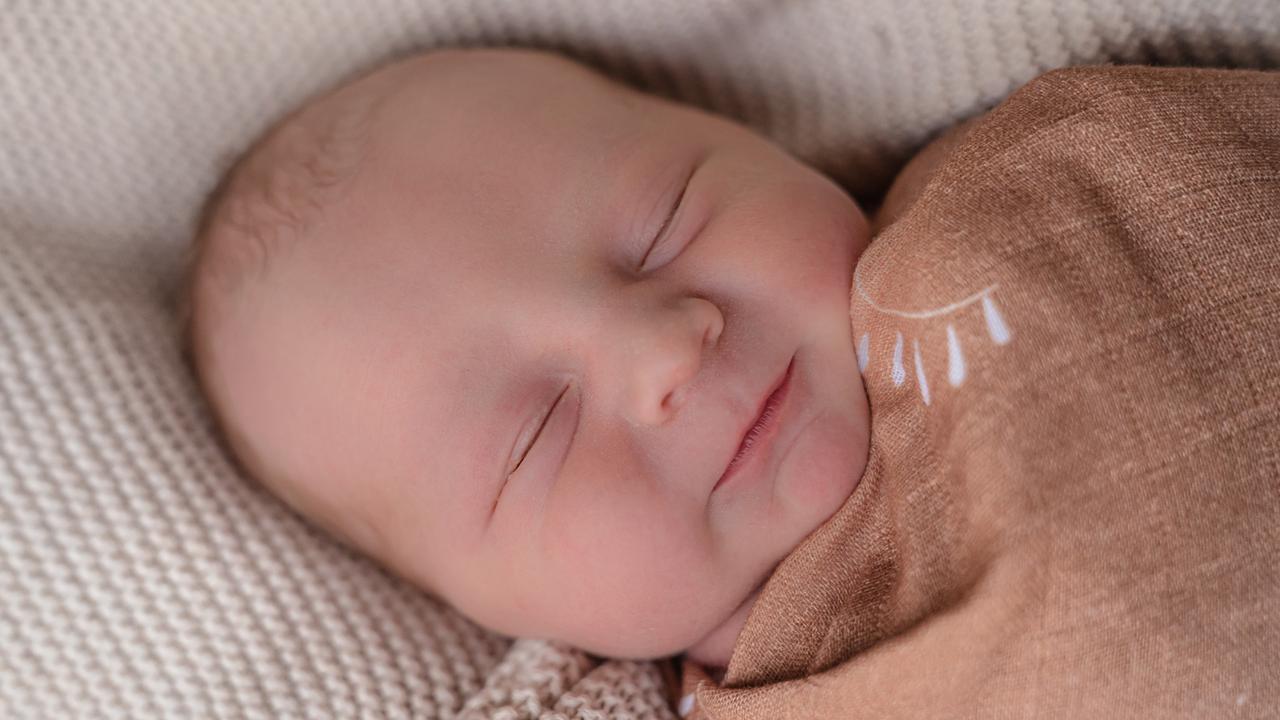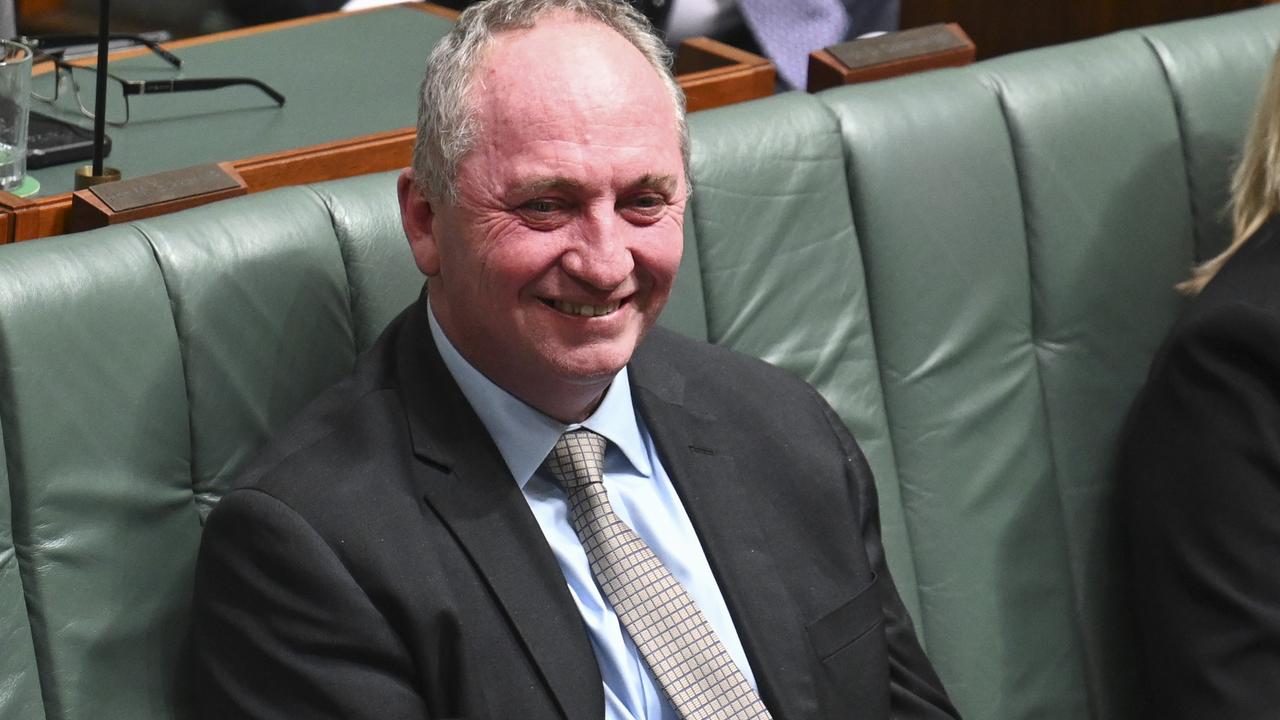IVF in Australia: The most affordable clinics in your state revealed
Exclusive analysis reveals the cheapest IVF clinics in Australia with the highest success rates. See the list of clinics in your state to compare.

Illness
Don't miss out on the headlines from Illness. Followed categories will be added to My News.
Exclusive: IVF prices have soared by almost 20 per cent since 2022 – and paying top dollar is no guarantee of success.
Prices are now so high some couples who needed multiple high cost IVF cycles are forking out more than $200,000 to get a baby.
However, a News Corp analysis of IVF costs around the nation found some budget clinics charging just $1000 in out of pocket fees per cycle finished in the top 10 for delivering a baby.
Some of the highest charging clinics – up to $6521 per cycle – performed below the national average.
These huge out of pocket bills come after the taxpayer covers around half the cost of an IVF cycle.
We tracked Australian IVF clinic’s performance using the government’s Yourivf success rate data for Measure 1 – the number of live births that resulted from the eggs (fresh or frozen) collected from women in 2020 that were fertilised and implanted as embryos in 2020 and 2021.
Private equity firms have taken over many of the country’s largest practices, hoping to cream off profits underwritten by taxpayer subsidies.
The cheapest IVF clinics in Australia – leaving patients with zero out of pocket expenses – include Connect IVF in Sydney, The Fertility Centre in Springwood, Brisbane, and The Royal Women’s Hospital in Melbourne.
Adora Fertility’s budget clinics are the next cheapest, charging just $450 in out of pocket expenses in NSW, $675 in Victoria, $625 in Queensland, and $875 in Western Australia.
The most expensive clinics in the country are Monash IVF clinics in Queensland, charging $6521 in out of pocket expenses, followed by Genea (multiple clinics) and IVF Australia Sydney.
Despite having the highest IVF fees in the country at $6521, we found Monash IVF’s Townsville clinic performs below the national average among women aged 35-42 (14.8 per cent). This could be skewed because it is based on just 61 egg retrieval cycles.
Monash IVF’s Gold Coast clinic, which also charges these high fees, had a performance rate of 24 per cent compared to the national average 26 per cent in the 35-40 age group.
However, its performance in those aged under 35 was higher than the national average (52 per cent versus 48 per cent).
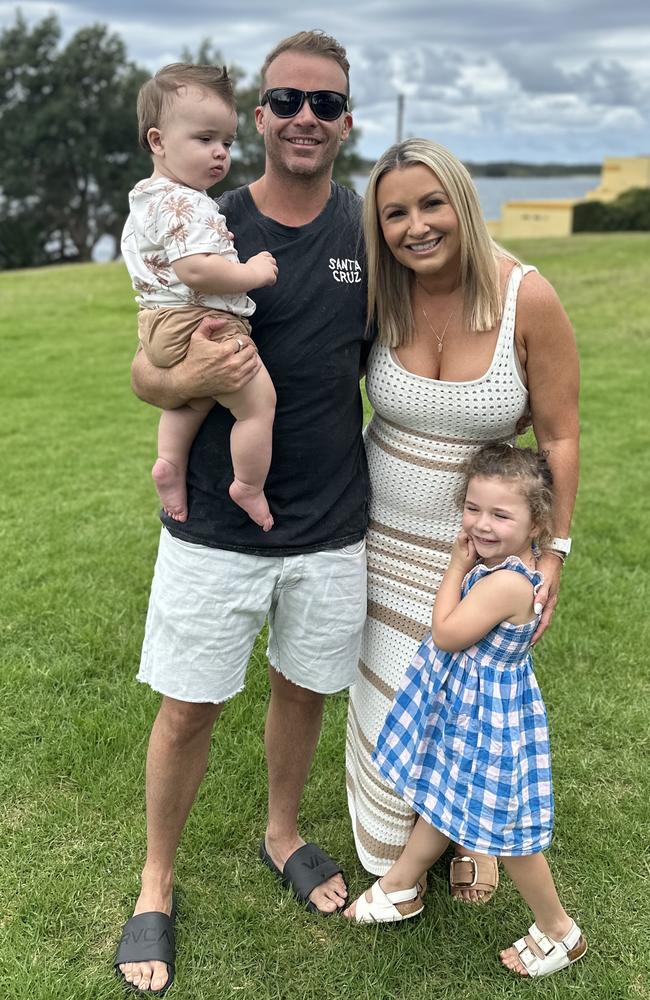
Chief operating officer of Monash IVF Group Dr Hamish Hamilton said investments in new labs and facilities in Queensland and the groups’ research spending was a factor in its high prices.
He said the below average success rates at these Queensland clinics were measured before these improvements.
“That higher level of investment in capital, equipment, people, scientists and doctors will come through over the next few years,” he said.
News Corp has uncovered tricky ways providers try to confuse customers wanting to make cost comparisons by introducing charges like booking fees in addition to ordinary IVF costs.
Coastal IVF Fertility Services charges a booking fee of $500, inflating the price of IVF from $4942 to $5442.
Some providers, such as Queensland Fertility Group and City Fertility, appear to be lower priced because they do not include specialist procedural fees for egg collection and embryo transfer in their web quotes – between $1000 and $2000 extra.
Most clinics do not include hospital costs, medicine costs or anaesthetist costs in the price guides they publish on their websites, others leave out the doctor’s fees.
These additional costs can add up to $1700 for egg collection, $900 for embryo transfer, $900 in doctor’s fees and up to $700 for an anaesthetist, but some of these fees may be covered in part or in full if you have private health insurance.
This means the quoted out of pocket expenses of more than $6000 can in fact exceed $7000 once these additional fees are added in.
We also found the out of pocket costs for an IVF cycle skyrocketed by almost $1000 ($992) at some clinics between late 2022 and January 2024.
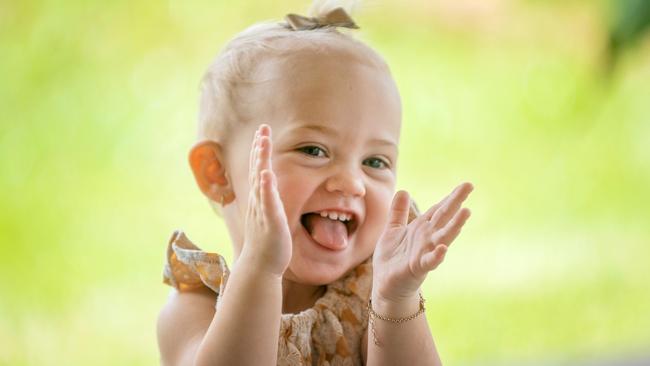
While some high-charging clinics like Genea Newcastle (charges $6385) have very high success rates among older women aged 35-40 (37.3 per cent), budget clinics like the Royal Hospital for Women in NSW, which charges $1000 in out of pocket expenses, also perform well (33.3 per cent among older women).
On the flip side, IVF Australia’s Wollongong clinic, which charges $5538, had a poor success rate of just 11 per cent.
The national average in this age group is 26 per cent.
“The results show that IVF clinics that have invested in the quality of service and scientific innovation, consistently provide better outcomes,” chair of Genea’s Medical Advisory Committee, Dr Myvanwy McIlveen, said.
Adora Fertility, which has some of the cheapest charges, was above the national average in Sydney but below average in Melbourne, Perth and Brisbane.
“It’s really about delivering the lowest possible price that we can. Medicare is relatively generous when it comes to funding of IVF in Australia, and our goal is to keep that as our point of how we can deliver our service at that price point,” Adora CEO Vanessa Ferguson said.
For women aged 35-42, Queensland Fertility Group Mackay, which charges $4728 in out of pocket expenses, had the best results in the country, with 41.5 per cent of those who had embryos implanted having a baby.
PATCH KEY TO BEING FREE OF BLOOD TESTS
Women will be freed from undergoing painful blood tests to measure hormone levels during IVF thanks to a breakthrough new Australian endeavour.
Symex Labs in Melbourne is developing a smart patch that continuously tracks hormone levels through the skin and transmits the data to a mobile phone or direct to the IVF clinic.
The patch, which is under development, would carry tiny microneedles that continuously measure hormone levels. Women would wear it on their arm.
The idea came from the two founders of the company, Edgar Charry and Muhammad Umer.
“They both had an experience with infertility and noticed the countless times women had to go and get their bloods taken and that, by the time the results came back, they would often be inaccurate or it would be too late to action anything off the back of it,” a spokeswoman for Symex said.

The patch is being developed in partnership with Monash IVF and that company’s chief operating officer Dr Hamish Hamilton said “we’ve developed a prototype and done some initial studies”.
“It’s probably about a year or so before we were at that particular point to trial it on people. We’re still in the early phase of development,” he said.
The project was last month awarded a $1 million federal government grant.
It might also be useful for women going through peri-menopause who want to understand their hormone levels.
And it would be useful for couples trying to get pregnant naturally because it would alert them to the best time to conceive.
‘TAKING ELEMENT OF STRESS OUT OF IVF’
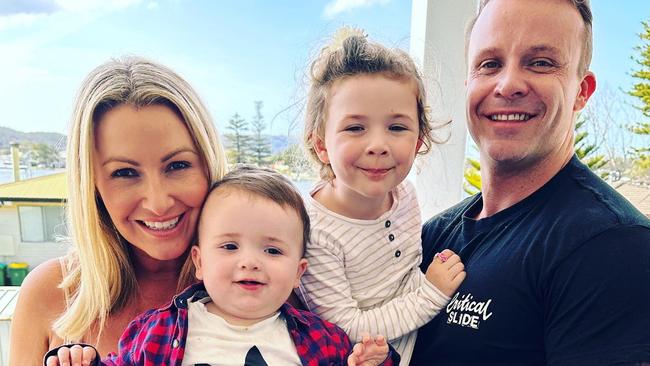
Amy Campbell would never have been able to afford her two children if she hadn’t found budget clinic Adora Fertility.
The 42-year-old manager of a tanning salon needed IVF to conceive as she suffers from endometriosis – and had saved for 12 years to afford it.
“I thought that I would just do it once and I’d have a baby, stupidly,” she said.
But after spending $20,000 on two rounds of treatment with another clinic, she had no baby and could barely afford any more treatment.
One of her tanning clients inadvertently saved the day.
“She (the client) was pregnant and she said we actually ended up going to Adora because it’s so much cheaper,” she said.
Ms Campbell’s out of pocket expenses at the budget clinic were just $1200 per round.
“I felt like it not being as expensive definitely takes an element out of the stress of IVF because, you know when you’re going in for a transfer, you can’t help but think if this fails, I’m up for more money,” she said.
After six IVF cycles, eight embryo transfers and miscarriages, she conceived her daughter Alinta in 2019.
Her son Taane was conceived using a frozen egg from her original cycle at IVF Australia that was transported to Adora during the Covid lockdown.
She still has one frozen embryo in storage and is deciding whether to try for another child.
“I 100 per cent wanted three or four kids if the journey didn’t take that long, but it was five years to get Alinta and seven and a half years by the time Taane was born, and we’re (Ms Campbell and her partner) in our 40s so it’s swaying a lot towards a no, but I still can’t let go of the embryos,” she said.
‘MONEY PROBABLY WASN’T AN ISSUE FOR ME’
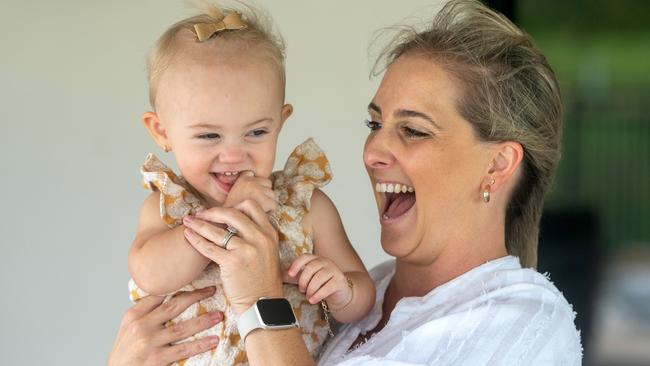
Samantha Hayes was so desperate to have children, she endured 17 rounds of IVF, six miscarriages and racked up medical bills of more than $200,000 to achieve her dream.
Diagnosed with stage four endometriosis in her mid-20s, the Queensland mum was unable to conceive naturally.
It took her seven rounds of IVF over five years to conceive her son Hux, now aged six.
Her daughter London, now aged one, came after a further 10 rounds of IVF and five years’ trying.
“I was determined to become a mother regardless of whether it was our own child or whether it was adoption,” the 36-year-old hair salon owner said.
“My husband (Tyson) did the math and we call our kids a small mortgage. With all the (endometriosis) surgeries included, I think it was over $200,000.”
To afford her children she said “we basically stopped doing fun stuff. We didn’t go on holidays and we didn’t go overseas, and we stopped doing all of the wonderful things that you would do for the first six years of being married”.
Most of her IVF treatment was done in Brisbane but the final rounds that led to the birth of her daughter were done in Mackay under Dr Naguesh Gaunekar, clinical director and fertility specialist at Queensland Fertility Group Mackay.
Ms Hayes said “money probably wasn’t an issue for me” when she was making a decision about which clinic to use.
“The reason why I picked Naguesh was I was kind of at the point to where I needed support, I needed someone that cared,” she said.
“He wanted me to go see a psychologist because no one had ever told me to do that in the nine years of IVF. He said a baby’s made up here and he pointed to my head, not down here, and said we need to get your head right,” she said.
“For Samantha’s three IVF cycles at Mackay, we focused on providing healing and support to help with the emotional toll of miscarriages,” Dr Gaunekar said.
‘FOR IT TO FINALLY HAPPEN, IT’S AMAZING’
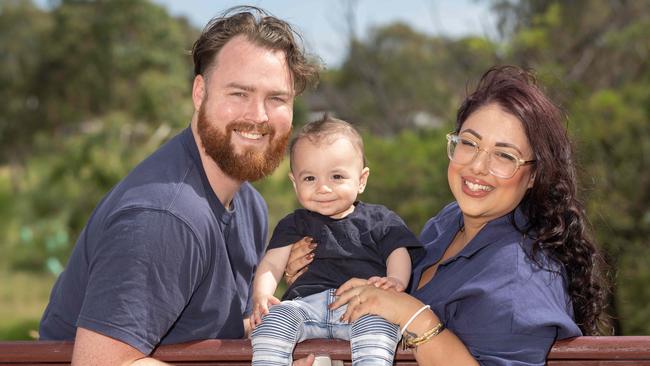
Jess Nicolaci and her partner Jacob “spent more than a house deposit on infertility treatment” before giving birth to their son Jax.
A cervical cancer diagnosis at age 21, followed by the discovery she had endometriosis, meant Jess was aware she would have difficulty conceiving a child.
“I got diagnosed with stage one cervical cancer. I had to have two operations for that and then was diagnosed with endometriosis,” she said.
The Melbourne couple, both now aged 29, started their IVF journey with budget provider Adora and had an early miscarriage.
The baby in her second pregnancy with Adora had Down syndrome and a heart defect, and she tragically lost the baby on December 21.
On the advice of family and friends the couple then switched to Monash IVF where they were successful in conceiving their son Jax, who is now one.
“We dreamed about this like 10 years ago. For it to finally happen, it’s amazing,” she said.
“It was just so bittersweet. I held my breath for nine months.”
They are currently trying for baby number two.
“You do get what you paid for and obviously we know that Monash is a little bit more expensive, but we have full trust in them and we don’t have to chase up anything. We know it’s happening behind the scenes,” she said.




